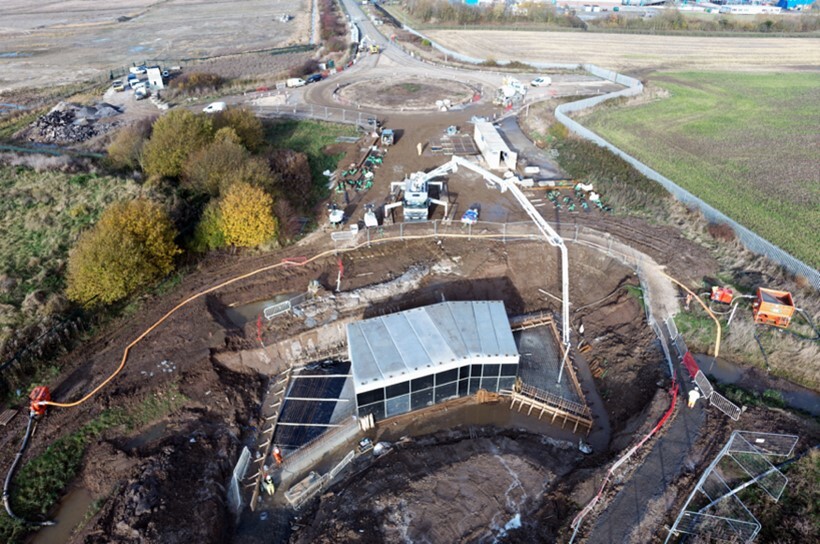
Overview
Traffic congestion can be a problem on route from Grimsby to Stallingborough. The 8.1 mile trip currently takes around 50 minutes in rush hour traffic. To reduce this congestion, North East Lincolnshire Council approached Mason Clark Associates to assist them with the design of a £6m, 2.5 km link road, opening up a direct link between Moody Lane, Grimsby through to Hobson Way, Stallingborough.
Tasks/Challenges
Many road users travel on the A180 which is by far the most heavily trafficked road in North East Lincolnshire. The journey consisted of slow speeds, longer trip times and increased frustration. Due to our civil engineering expertise and innovative methods, North East Lincolnshire Council required our services to design a link road going from Grimsby to Stallingborough to ease the increasing congestion. As well as the new stretch of road, the existing private road between Moody Lane and where the Courtaulds gatehouse currently stands will be improved and enhanced and the two roads will be combined. MCA had concerns about the ground condition as it was too weak to support the proposed bridge structures. Also, at the sites of the two main structures; Oldfleet Drain and Mawmbridge, a utilities investigation revealed there was a significant quantity of gas mains and electrical cables which were close to the works and easily disturbed or damaged. The poor ground conditions coupled with the location of services meant that large excavations were not feasible. MCA specified innovative ground stabilisation works which allowed existing material to remain in place. MCA also had to ensure they minimised environmental impact and that the water vole habitat was maintained.
Activity
MCA are experienced with dealing with associated environmental considerations, including the retention of trees and the impact on the habitats. Therefore, part of the Humber Bank link road project plan, is the creation of a woodland area, with several species of trees already planted. Various features were incorporated into the design of the link road, to mitigate any impact on the water vole habitat. MCA set the base of the structures below existing bed level and reinstated the soft bed through the culvert, ensuring that the banks were reinstated in front of the wing walls. MCA also ensured the new bridge followed the existing curved profile of the watercourse. With regards to the fragile grounds at both bridge sites, MCA considered various options and it was of paramount importance that the services were not damaged. Deep excavations to remove the soft material would have either required battering back of the excavations or installation of steel sheet piling, both of which were considered to be high risk. It was decided that the lowest risk method was to treat the soft material in-situ by using a ground improvement method. This method consisted of pumping cementitious material into the weak ground and then thoroughly mixing all the material in the designated area. Samples of the material were taken and tested to ensure the mix parameters were achieving the required compressive strength.
Results
The Humber Bank link road will improve infrastructure to support existing businesses. We have made fantastic progress so far with the design and construction of the link road.
When the Humber Bank link road is completed and in use, MCA will have aided the reduction of travel times, improved traffic flows and helped the local wildlife.
A shared footway and cycleway and other new highways infrastructure, such as street lighting, will also be included, again helping with the reduction in traffic congestion delays and the associated costs.